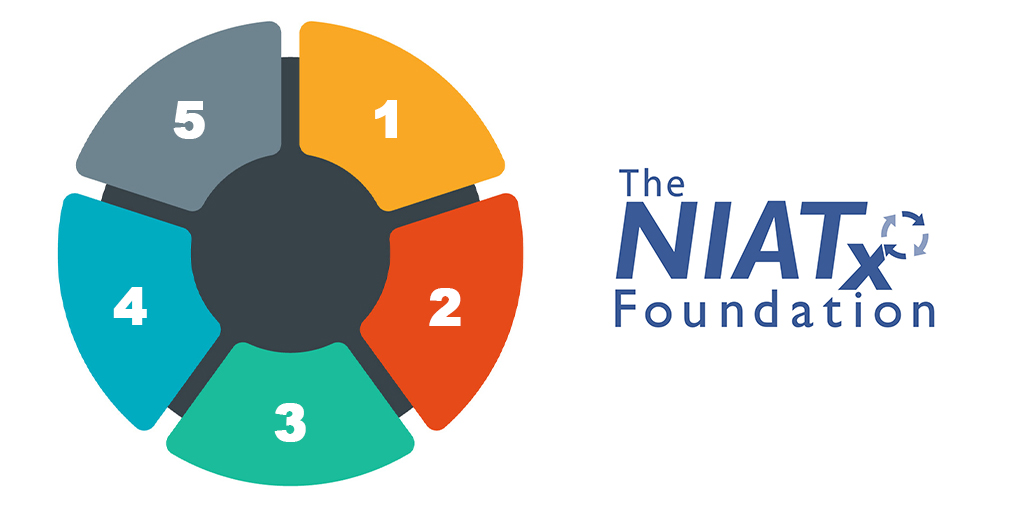Using the NIATX model to implement The ASAM Criteria

The ASAM Criteria can help addiction treatment providers accomplish their mission: supporting the best possible outcomes for the people they serve. However, the challenges of implementing The ASAM Criteria go beyond clinical skill alone. It is common for programs to struggle with applying key principles consistently, and in ways that meet their patients’ unique needs. As every clinician knows, even the best information does not necessarily result in change.
There is a science to organizational change, just as there is a science to individual behavior change. Similar to the way treatment providers use evidence-based practices to help patients change, we can use evidence-based practices to facilitate changes in organizational practices. There is a whole body of research focused on how organizations implement changes and the differences between successful and unsuccessful change efforts.
The Network for Improvement of Addiction Treatment (NIATx) process improvement model is based on a set of evidence-based practices successfully applied in more than 3,000 organizations and supported by dozens of peer-reviewed publications. Straightforward and using familiar tools, the NIATx process quickly produces observable results, which can be tested for quality and create a competitive advantage.
Five key principles of the NIATx model
- Understand and involve the customer
The customer should be at the core of any decision to adopt a new practice. In addiction treatment, there are many customers. Much of what providers do is focused on satisfying the payer, who is often different from the person using the services. Ultimately, the payer will be happy if the patient has good care processes and good outcomes, so focusing on improvements to patient care is the most important NIATx principle.
Understanding patients’ wants and needs means understanding their experience of your services. Some things to think about include:
- How long do different processes take, and how long do people have to wait for decisions?
- Do decisions seem logical to patients and other customers?
- Do patients understand the process of treatment, the benchmarks of success, and what happens if a particular intervention is unsuccessful?
- How engaged are patients in making decisions about their own treatment, and what information do they have with which to make those decisions?
Learning the answers to these questions often leads to significant change in an organization.
- Fix key problems
There is no point in changing just for the sake of change. Adopting new practices, like applying The ASAM Criteria, needs to address a key organizational problem. Fixing key problems combines two critical factors from the research: ensuring senior executive involvement and staying focused on the mission. Many key organizational issues can be solved, at least in part, by well-executed adoption of The ASAM Criteria.
- Pick a powerful change leader
Plans for change are insufficient without a powerful messenger. A good change leader will have the ear of the executive and the respect of the staff who will have to use new practices. It is not possible to overemphasize how important it is to choose the right person to lead the charge. A person with the wrong attitude or skills will sink a great idea before it has even begun.
- Get ideas from outside the field
Incorporating The ASAM Criteria into your organization may require some creative thinking. The most creative solutions come from thinking about problems from a different perspective. What could an addiction treatment program have in common with a coffee shop, for example? A lot! Both manage customer flow in a relatively small footprint and provide a service experience that makes people want to come back. Thinking about a problem from a different perspective may help you come up with different solutions that work as well for your organization as they did for one in a different industry. Even if you cannot adopt the exact approach taken by the other organizations, thinking about how they addressed similar issues may help you generate an adaptation that is appropriate in your organization.
- Use rapid-cycle testing to establish effective change
When a system is flawed or outdated, it can be tempting to design an ideal system and try to roll it out in the place of the old one. Often, this is accomplished by a team not involved or invested in the current system and with minimal or no testing at all. This is the perfect way to set up the new system for failure. Processes that implement changes incrementally and test repeatedly are far more likely to be successful. Each new idea should, whenever feasible, be tested at the smallest scale possible for the briefest period of time capable of yielding information on whether the change will work or not. A series of rapid-cycle pilot tests can lead to organizational transformation in the same amount of time as a radical transformation, but with less risk and greater chance of reward.
Moving forward with organizational change
The Change Companies, in partnership with ASAM and NIATx, offers resources to help programs improve quality of care in manageable increments, aligned with each program’s unique goals and challenges. They include
- The ASAM Criteria Implementation Guide, which uses the ASAM principles and NIATx process improvement model to describe characteristics that should be common to all treatment programs and a tested, proven model of quality improvement. The Guide is designed to help treatment programs find a balance between fidelity to standards and the flexibility to meet the needs of patients.
- A free webinar, ASAM Criteria Implementation: New Tools, New Partnerships, led by members of ASAM, NIATx and Train for Change, provides an overview of what to expect from the NIATx model for process improvement.
- ASAM Implementation training, designed to help organizations use the NIATx process improvement model to implement The ASAM Criteria, make organizational changes that support its fidelity and strengthen a culture of continuous improvement
These implementation resources can help your team define the problems to be solved, measure improvement, and set your organization up for successful, sustained change.

